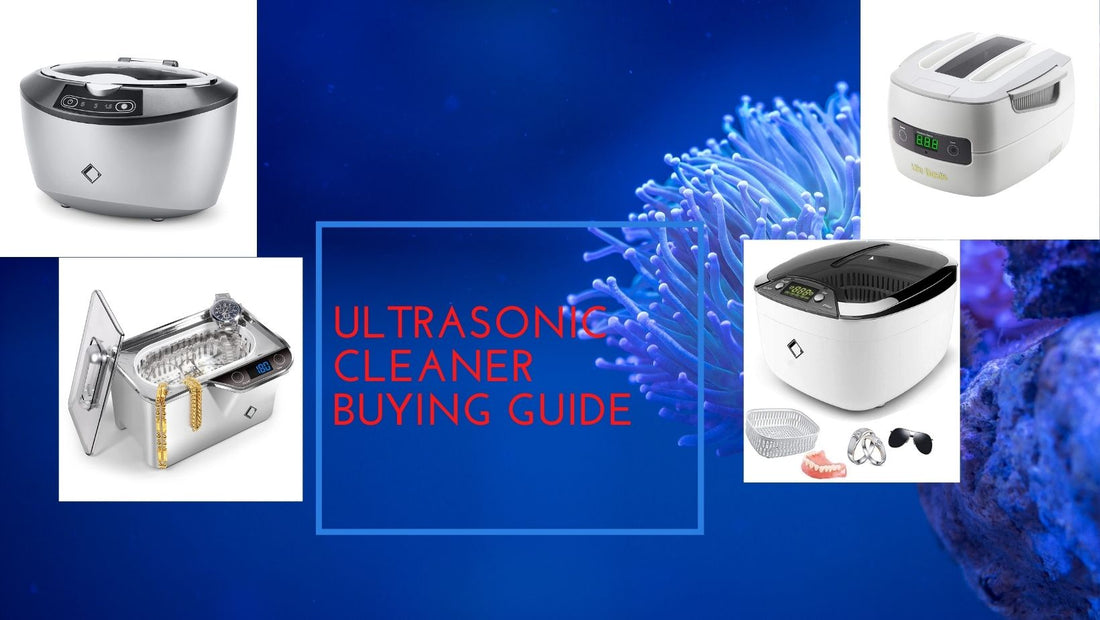There are many ultrasonic cleaner for different purpose such as for household, for commerce and industry etc.in the market.Ultrasonic cleaning is employed in a variety of industries and can be used on many materials and objects of varying sizes and shapes. Which one you need in deed? since ultrasonic cleaners are widely used in household, we can called them ultrasonic jewelry cleaners as well. Standard series for household, allow you to wash small parts including watches, coins, fountain pens, jewelry, lenses and associated optical parts, dental and surgical instruments and industrial and electronic equipment etc. Aluminum, stainless and mild steel, brass, copper, wood, alloys, rubber, plastic and cloth all can be placed in an ultrasonic cleaning device.
What Is Ultrasonic Cleaning ?
Ultrasonic cleaning is a type of cleaning process which uses cavitation induced by alternating compression and rarefaction cycles at ultrasonic frequencies. Cavitation is the phenomenon where tiny bubbles or voids are formed in a liquid due to the rapid decrease in pressure. These voids are instantaneously imploded by the rapid increase in pressure creating a shockwave Ultrasonic frequencies are sound waves vibrating at a range from 20kHz to 100 kHz.


How Does Ultrasonic Jewelry Cleaner Work?
An ultrasonic cleaner operates by creating high-frequency waves in a liquid.The items to be cleaned are placed in this liquid, where the rapid motion of the water creates very small bubbles that hit the surface to be cleaned and knock any dirt to the bottom of the liquid's container.
The basic mechanism used in an ultrasonic cleaner is a device that creates a high-frequency sound called a transducer. Ultrasonic ranges in frequency from about 20 to 400 kHz. This signal enters the liquid, which needs to be viscous enough for the waves to move through it quickly, and begins to generate very small bubbles. The higher the frequency of the sound, the smaller the bubbles will be. These bubbles move through the liquid and hit the surface of the items to be cleaned, causing the dirt to fall away.
How Does Ultrasonic Cleaner Wash Your Items?
When you connect your machine to a power source and switch it on, the generator and transducer immediately get to work. As the generator begins to convert the direct source of power into electrical energy for the transducer, the transducer starts to vibrate and pulse. It also begins to convert the electrical energy into ultrasonic energy.
As a result of the quick movement, the transducer creates high-frequency compression sound waves. This movement ultimately results in the formation of cavitation bubbles, and as this process occurs, the bubbles travel through the cleaning liquid and cleaning begins.
Most items can be washed by water only while some special stains and dirt require liquid cleaner in the water can be simple ammonia solutions or more complex solvents.This can prevent having to run a piece of jewelry through an ultrasonic cleaner repeatedly until the stains are slowly removed.
Ultrasonic Cleaner Design
Some ultrasonic cleaners have very simple designs, an ultrasonic cleaner is comprised of three essential components: a tank, a generator, and a transducer. Other designs are more complex, providing trays that allow items to be secured in place before being lowered.
Tank: Ultrasonic cleaning machines are available in a variety of tank sizes. The size of your machine will depend on the size and quantity of items you will be cleaning.
Generator: The power generator converts electrical energy from the source into mechanical energy in the form of sound waves. These sound waves are comprised of millions of microscopic bubbles. Each bubble is filled with a vacuum effect called implosion. As the bubbles collapse on the item being cleaned, they implode, removing the debris from the object. This process is called cavitation.
Transducer: The transducer is perhaps the most critical component of an ultrasonic cleaning machine. Using electrical energy from the generator, it generates sounds at frequencies that the human ear cannot hear. This usually starts around 40kHz.
A transducer has two essential parts: the frequency plate and the transducer itself. For most cleaning machines, piezoelectric crystals are used as the active element. They are usually positioned at the bottom.
Ultrasonic Cleaner Types
Industrial Cleaners: As the name suggests, these cleaners are high-grade and are for industrial level use. As such, these cleaning tanks are either larger or custom designed. Similarly, the generators are more robust, delivering more power, and the transducers are of a higher grade.

Lab size/Tabletop Cleaners: Lab size or tabletop cleaners are available in a variety of sizes. They take up less space than an industrial cleaner and are designed for all day operations. They usually offer more accessories to assist with the cleaning operation.
Small Systems: These systems are generally used in home or small business settings. They offer the functionality of larger systems, but with less capacity and fewer features.
How To Choose Ultrasonic Cleaner You Want?
Depending on the object to be cleaned, pick the suitable solution you need. Such as the frequency, tank size and the voltage standard.
The level of frequency determines the kind of cleaning that is created. At high frequency, small bubbles are produced, which offers a gentler and more detailed cleaning action. If you are looking to clean extensive dirt and contaminants, you should use lower frequencies. The lower the frequency, the bigger the bubbles, allowing the user to perform more intense and aggressive cleaning actions.
Below is comparison about different Ultrasonic Jewelry Cleaner at lifebasis.com for your reference.

Enjoy!
Website: www.lifebasis.com
Contact:webmaster@lifebasis.com
Facebook: https://www.facebook.com/LifeBasis-114571757912143
Instargram: https://www.instagram.com/life_basis/





